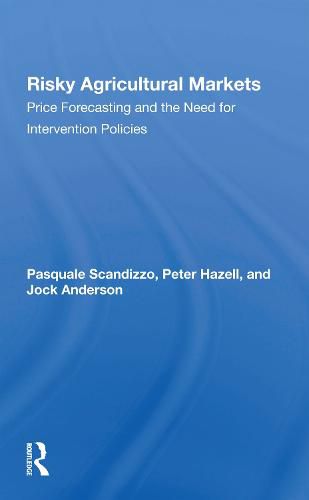Readings Newsletter
Become a Readings Member to make your shopping experience even easier.
Sign in or sign up for free!
You’re not far away from qualifying for FREE standard shipping within Australia
You’ve qualified for FREE standard shipping within Australia
The cart is loading…






This book shows how decisions made by individual farmers influence the efficiency of agricultural markets. Unless farmers properly take account of the correlation between prices and yields in forming their price forecasts, competitive markets will often be socially inefficient, leading to misallocation of resources. The authors demonstrate that a simple and practical price forecasting rule, based on expected per unit revenue, is generally adequate to ensure efficient market behavior.Time-series data from various countries are used to test the hypothesis that market supply is influenced by the correlation of price and yield as well as by lagged market prices . The importance of market inefficiencies in risky situations is shown to, depend on the variability of yields, the nature of farmers'price forecasting behavior, the degree of private risk aversion,and the elasticity of demand. The authors suggest and evaluate three basic policy approaches governments may take when confronted with very inefficient markets–establishing production quotas, improving market information services, and implementing price stabilization schemes. They conclude by discussing implications of the study for the specification of agricultural supply models and for the economic appraisal of risky investment projects.
$9.00 standard shipping within Australia
FREE standard shipping within Australia for orders over $100.00
Express & International shipping calculated at checkout
This book shows how decisions made by individual farmers influence the efficiency of agricultural markets. Unless farmers properly take account of the correlation between prices and yields in forming their price forecasts, competitive markets will often be socially inefficient, leading to misallocation of resources. The authors demonstrate that a simple and practical price forecasting rule, based on expected per unit revenue, is generally adequate to ensure efficient market behavior.Time-series data from various countries are used to test the hypothesis that market supply is influenced by the correlation of price and yield as well as by lagged market prices . The importance of market inefficiencies in risky situations is shown to, depend on the variability of yields, the nature of farmers'price forecasting behavior, the degree of private risk aversion,and the elasticity of demand. The authors suggest and evaluate three basic policy approaches governments may take when confronted with very inefficient markets–establishing production quotas, improving market information services, and implementing price stabilization schemes. They conclude by discussing implications of the study for the specification of agricultural supply models and for the economic appraisal of risky investment projects.